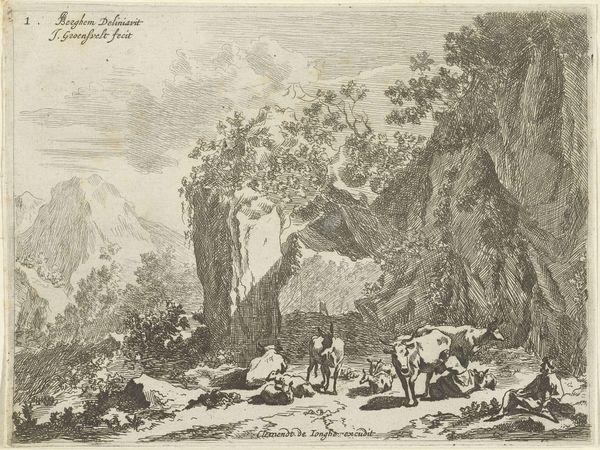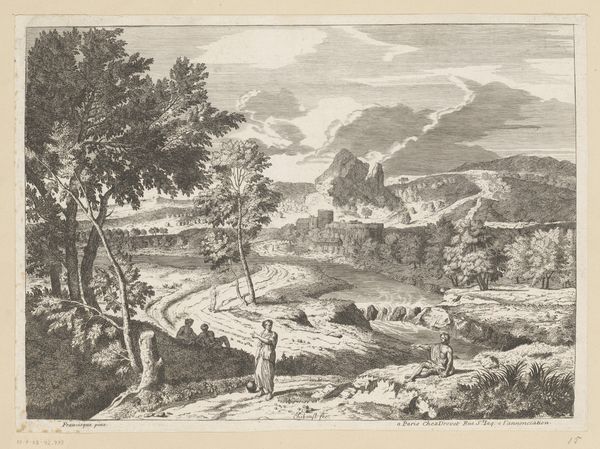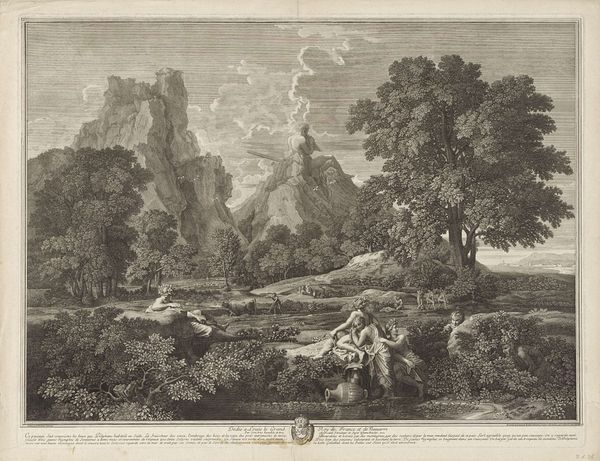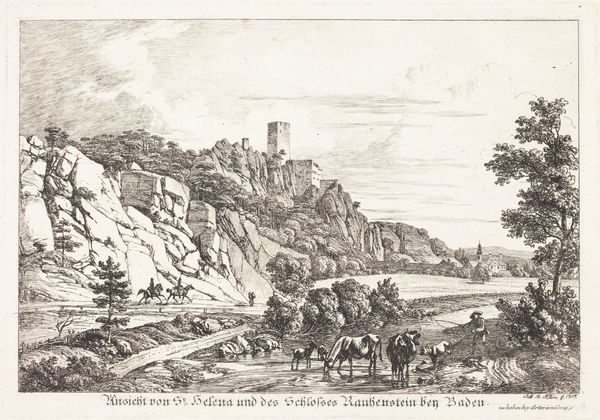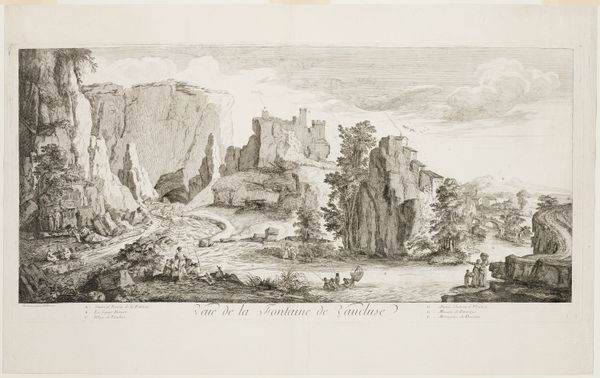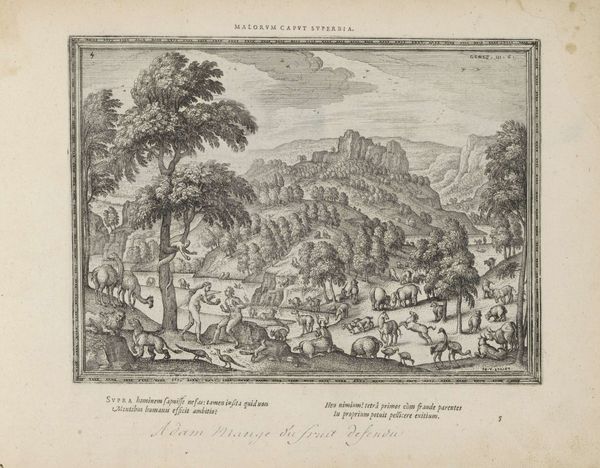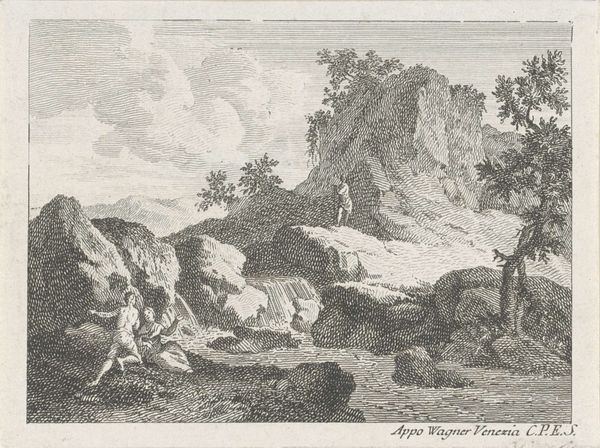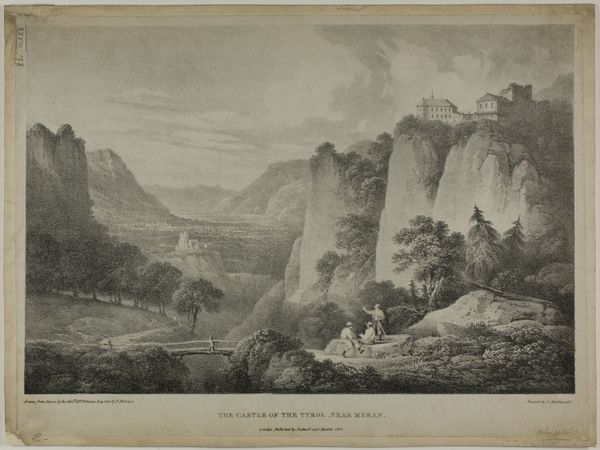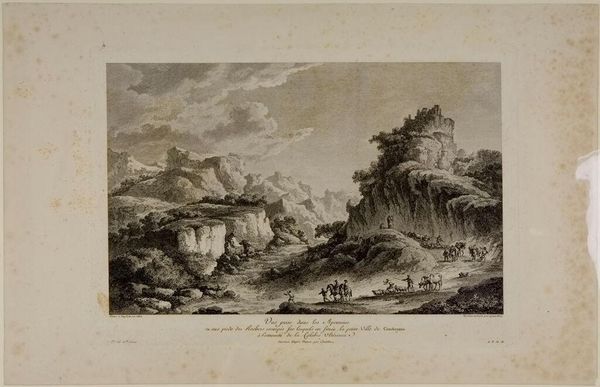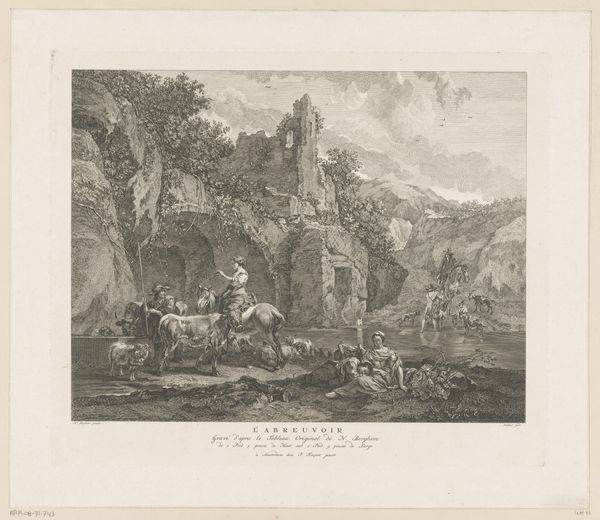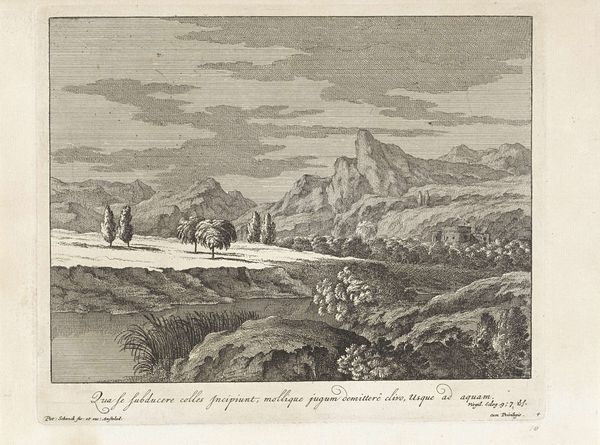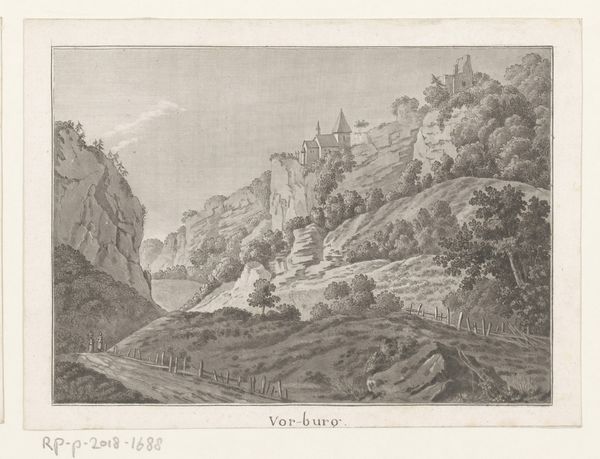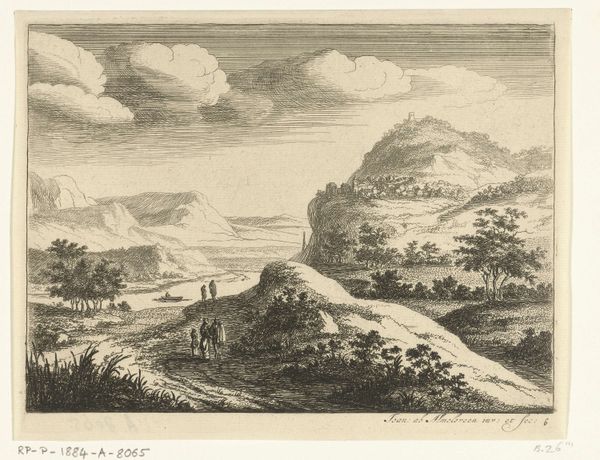
drawing, etching
#
drawing
#
neoclacissism
#
etching
#
landscape
#
history-painting
Dimensions: height 220 mm, width 266 mm
Copyright: Rijks Museum: Open Domain
Curator: Looking at "Grotten van San Pamarica in het dal van Notto" held here at the Rijksmuseum, created between 1781 and 1786 by Emmanuel Jean de Ghendt using etching, one immediately notices its careful composition. Editor: Yes, there’s a real balance, isn’t there? A quiet solemnity. The precise lines give a sense of ancient history frozen in time. The scale is immense, even within the frame, which imparts the feeling that nature itself overwhelms the figures below. Curator: Indeed. Ghendt’s image calls to mind a narrative structure. The group of figures seems like witnesses to an ancient tableau—they appear to be exploring or perhaps surveying these natural caverns. Caves have held deep significance across cultures, often representing hidden knowledge, initiation, or a connection to the underworld. Editor: And visually, it’s compelling. The contrast is beautifully stark, which enhances the forms of the landscape, yet creates a visual tension with the subtle, nuanced play of light within the grottos and foliage. It allows the caves, as architectural masses, to seem both inviting and impenetrable. Curator: It echoes ideas pervasive in Neoclassical art too: humankind’s connection with history and nature, its search for origin. These caves as they’re depicted, represent both the sublime power of nature and human curiosity of the world. It’s worth wondering, though: are they explorers, or looters, or scholars? It raises such fundamental questions. Editor: The image feels complete with only black and white, although I would not protest to a sepia or ochre tint if I had the choice, really leaning into that timeless feel. It’s a compelling reminder of how art can convey historical weight. What an amazing contrast with contemporary images—the same symbolic spaces shown from vastly different points of view! Curator: I completely agree. It’s interesting how through meticulous structure, scale, and contrasts in values, the artist has produced such an affecting glimpse into the layered historical and psychological weight of landscapes. Editor: Absolutely, seeing the composition itself as an invitation to the contemplation of these sites through the ages really shifts our perspectives and helps us reflect on how deeply art and landscapes resonate across human experience.
Comments
No comments
Be the first to comment and join the conversation on the ultimate creative platform.
